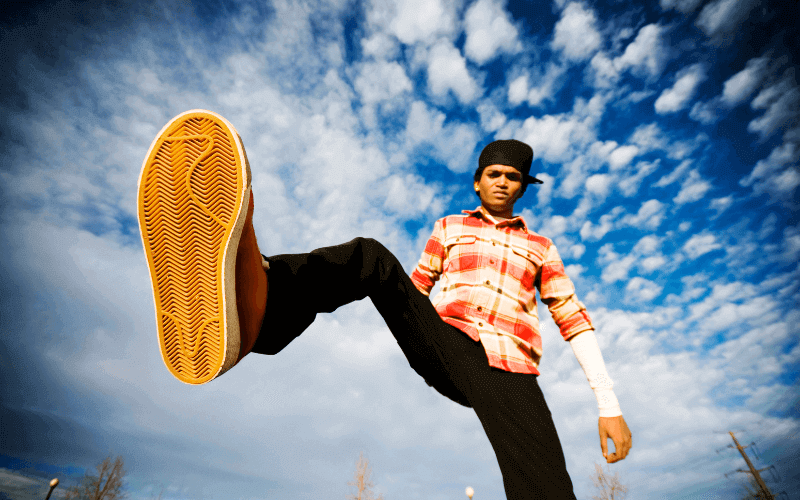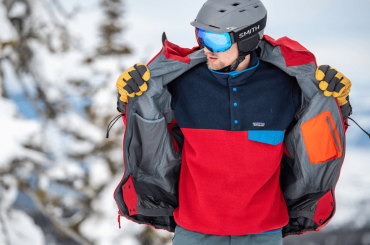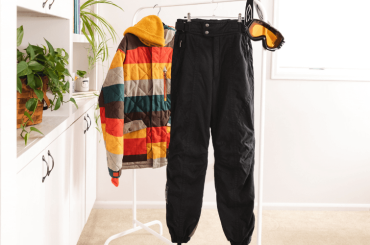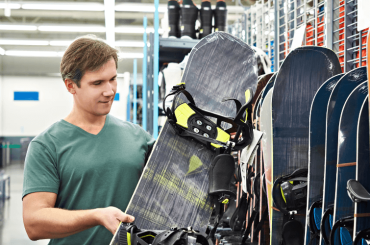Snowboard stomp pads are small, an adhesive pad that attaches to the sole of your boot to provide grip for stepping off your snowboard. They can be made from a variety of materials, including foam, rubber, and synthetic leather.
Their purpose is to provide grip for your back foot when you are riding and also, make it more straightforward to keep your equilibrium.There are a variety of stomp pads available on the market, so it is important to choose the right one for you.
In this blog post, we will discuss the different types of stomp pads and help you decide which one is best for you.
What are snowboard stomp pads and what do they do?
Snowboard stomp pads are small pieces of grip material that attach to the top of a snowboard, providing additional traction for the rider’s feet. They can be useful for performing tricks and maneuvers, as well as just giving extra stability while riding.
These stomp pads come in a variety of designs and materials, from simple rubber grips to more intricate patterns and textures. Some even feature customizable stickers for added personalization.
When choosing a stomp pad, it’s important to consider the size and shape that will best fit your snowboard, as well as the type of grip you prefer for your riding style. With the right stomp pad, you’ll have a more stable and comfortable ride on the slopes.
Stomp pads are adhesive pads that are placed on the top of a snowboard, typically near the back foot. They provide traction for the rider’s boots, allowing them to easily manipulate and control their board while performing tricks or navigating terrain. Some stomp pads also have designs or logos for added style.
It is important to note that stomp pads should not be used as a replacement for binding straps or bindings altogether; they simply offer an extra layer of stability and control for riders.
When choosing a stomp pad, it is important to consider the shape and size that best fits your snowboard as well as the texture or design that suits your riding style.
How to choose the right stomp pad for you?
1) First, consider your style of riding and the type of board you have. A larger stomp pad may be more suitable for freestyle riders, while a smaller one may work better for those who primarily ride on powder or do technical tricks.
Additionally, think about the shape and design of the stomp pad. Some have grooves or patterns that can provide extra grip, while others feature graphics or logos for added style.
2) Next, make sure to choose a stomp pad that fits properly on your board. Measure the area where you want to place it and compare it with the size specifications of the stomp pad before purchasing.
3) Finally, consider materials and durability – different materials (such as rubber or foam) may offer varying levels of grip and how well they hold up over time.
Overall, finding the right stomp pad is a matter of personal preference and ensuring it meets your functional needs as a rider.
Different Types of Stomp Pads
Some stomp pads also feature unique designs such as graphics or textures for added style on the slopes. And some have adhesive backing for easy installation, while others require screws or hardware for secure attachment to the snowboard.
It’s important to choose a stomp pad that provides enough grip and traction for your riding style and ability level. It’s also important to ensure proper placement on the snowboard for optimal use when getting off lifts or navigating terrain parks.
When choosing a stomp pad, it’s also recommended to consider the durability and weather resistance of the material to withstand repeated use and harsh winter conditions.
How to install a Stomp pad on your snowboard?
Following these steps:
- Choose a stomp pad that matches the size and shape of your snowboard’s tail or nose.
- Clean the area where you want to place the stomp pad with rubbing alcohol and allow it to dry completely.
- Peel off the adhesive backing from the stomp pad and firmly press it onto the clean surface of your board.
- Press down on the stomp pad for about 30 seconds to ensure it is securely attached.
- Enjoy improved stability and control when landing tricks or navigating terrain park features!
- Remember to periodically check the stomp pad for any signs of lifting or peeling, and reapply as needed.
Tips for using your stomp pad correctly?
Here are some tips:
- Make sure you place the stomp pad in a spot where it will not hinder your movement or balance while riding.
- Practice using the stomp pad before going out on the slopes to get a feel for how much pressure is needed to properly engage the stomp pad and gain extra lift.
- Keep the stomp pad clean and free of debris to ensure optimal grip and performance.
- Remember that the stomp pad should be used as an aid, not as a replacement for proper technique and form when trying to gain extra lift-off jumps or using it for tricks.
- Have fun and experiment with different placement and pressure techniques to find what works best for you!
FAQs – snowboard stomp pads
Are snowboard stomp pads necessary?
It depends on the individual’s preference and skill level. Stomp pads can provide more traction and stability on the board, but some riders may find them unnecessary or even hindering to their riding style.
Ultimately, it is up to the rider to decide if a stomp pad is necessary for them.
Can you use grip tape as a stomp pad?
Grip tape can be used as a stomp pad, but it may not provide as much traction and stability as a dedicated stomp pad. Additionally, using grip tape in this way may wear down the grip tape quicker.
How are stomp pads made?
Stomp pads are typically made of rubber or silicone, with adhesive on the back to stick onto the snowboard. Some stomp pads may have textures or patterns for added traction.
Can stomp pads damage my snowboard?
If properly applied and cared for, stomp pads should not damage a snowboard. However, it is always a good idea to regularly check the stomp pad and make sure it is securely attached to the board.
Where do you put a stomp pad on a snowboard?
It is usually placed on the tail or nose of the snowboard, in a spot that will not hinder the rider’s movement or balance while riding.
However, some riders may prefer to place it in a different spot that works better for their riding style and ability level.
Can stomp pads be removed?
Yes, stomp pads can be removed by carefully peeling them off of the snowboard. However, they may leave behind some residue or damage the board’s surface, so it is best to carefully consider where to place the stomp pad before sticking it on.
Note: It is always a good idea to consult with a professional or experienced rider before purchasing and installing a stomp pad.
Do you need a traction pad?
Again, it depends on the individual’s preference and skill level. Traction pads, also known as “grip pads,” provide extra grip for the rider’s feet on the board.
Some riders may find them helpful, while others may not feel a need for them. Ultimately, it is up to the rider to decide if a traction pad is necessary for them.
Final Words
Snowboard stomp pads are a device that is placed on top of the binding to improve traction. They come in a variety of shapes and sizes, and they can be made out of different materials.
Some people think that stomp pads are unnecessary but others find them to be helpful. If you’re not sure whether or not you need a stomp pad, consider your riding style and whether or not you think it would be beneficial for you.





